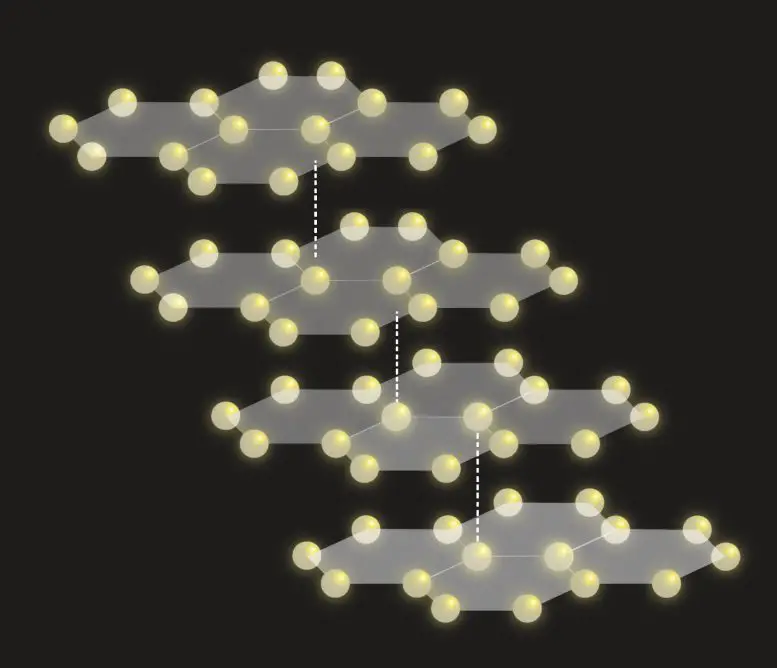With the continuous advancements in technology and research, scientists are constantly on the lookout for new forms of exotic superconductivity. Recently, groundbreaking research has revealed that stacking layers of graphene can lead to a variety of topological superconductivity—a novel phenomenon that is unearthing nature’s secrets. Through “big beauty contests,” researchers are discovering unexpected forms of this complex state of matter, as well as unlocking exciting possibilities for future applications. In this article, you will explore various aspects of the multilayered graphene system used to pioneer topological superconductivity and get a glimpse into the vast potential that lies ahead.
Table of Contents
Pioneering Topological Superconductivity With Multilayered Graphene System
Graphene is a strange material with many promising qualities. It is a single-atom thick sheet of carbon atoms arranged in a honeycomb lattice pattern and has been studied extensively since its initial discovery in 2004. Its physical properties, such as its incredible strength and its excellent electrical and thermal conductivity have made it one of the most sought-after materials for research and development of new technologies.
A team of researchers from the Institute of Science and Technology Austria (ISTA) and the Weizmann Institute of Science have been researching graphene’s superconducting properties, or its ability to conduct electricity without resistance. These researchers recently published their newest findings on this topic in a research paper titled “New Possibilities for Creating Topological Superconductivity By Stacking Layers of Graphene Sheets”. In this paper, they explored what would happen when graphene was stacked in different ways.
The team found that by stacking just two layers of graphene sheets together, new possibilities for creating so-called topological superconductivity were opened up. Topological superconductors are a type of materials with unique electron configurations that allow them to exhibit exotic behavior not seen in other materials. This means that such materials can be used for quantum computing and other applications where certain types of electrons must be manipulated to solve complex problems.

To explore these possibilities further, the researchers simulated what happens when a few layers of graphene sheets are stacked on top of each other in certain ways. They studied how the electrons interacted with this layered graphene system and found that it could potentially lead to the creation of highly efficient electronic circuits, enabling faster data transmission speeds than those achievable using traditional methods.
Ultimately, the researchers concluded that multilayered graphene offers great potential as a platform for exploring new forms of exotic superconductivity. The knowledge gained from studying these layered structures could also open up new avenues for designing novel electronic devices with unprecedented performance capabilities.
“Big Beauty Contest” Uncovers Unexpected Forms of Topological Superconductivity in Multilayered Graphene Sheets
In an effort to understand how the electrons of multilayer graphene sheets behave, researchers developed a “big beauty contest” that examined layer shifts and the number of layers. The positively charged nuclear cores of the carbon atoms in the honeycomb lattice interacted with the electrons, thus creating different environments for them. Electrons were attracted by the nuclei, and repelled by each other.
The team started by examining a single electron interacting with the nuclei of the graphene. Through their investigation, they found that particle’s behavior changed based on the number of layers and their arrangement. With a small displacement of the layers, electrons created new arrangements: some particles moved towards each other, while others pushed away. This propelled further research into a new and unexpected form of topological superconductivity.
This approch allowed researchers to gain a better understanding of how electrons interact with one another in multilayered graphene sheets. As electrons reacted to layer shifts and varying numbers of layers, they produced new forms of topological superconductivity that could not be seen before. By observing these reactions and interactions, scientists were able to deduce potential applications for this new form of exotic superconductivity and how it could be used in various fields.
The team’s findings suggest that this approach could offer a more reliable method to identify exotic topological structures of multilayer graphene sheet systems than traditional methods. By studying interactions between particles based on layer shifts and number of layers, researchers were capable of discovering potential new forms of exotic superconductivity – providing valuable insights into future technology applications.

Unlocking Nature’s Secrets
Theoretical research is paving the way for future experiments that will test how graphene systems behave as predicted. Researchers are increasingly relying on computer simulations to explore the potential of this layered network of carbon atoms and their subatomic particles. Thus far, calculations indicate that it could be possible to achieve new forms of topological superconductivity by carefully arranging multiple layers of graphene and inducing electronic interactions between them.
Graphene is fast becoming recognized for its potential as a topological superconductor, which is defined as a material that can conduct electricity without any resistance. This trend has been further endorsed by the European Research Council, who recently funded research in this area. The grant awarded to a team of scientists will enable them to further analyze graphene’s properties and develop a more comprehensive picture of it on a quantum mechanical level.
Ultimately, understanding graphene’s behavior will open up many potential applications from quantum computing and energy-efficient electronics to quantum information processing and quantum encryption devices. Meanwhile, researchers are exploring various ways to manipulate the system in order to control its exotic properties. It is only through continued investigation that we can fully understand what nature has in store for us and learn how to exploit it for our own benefit.
The discovery of unexpected forms of topological superconductivity in multilayered graphene sheets is monumental. Unveiling the hidden mysteries of the universe, this pioneering research has opened up the possibility of groundbreaking technological advancements in superconductivity and could even lead to the development of new and innovative devices. Ultimately, this breakthrough in understanding and exploring exotic forms of superconductivity by stacking layers of graphene serves as a reminder of the fact that our world is filled with hidden wonders just waiting to be discovered.
Frequently Asked Questions About Superconductivity
What is superconductivity explain?
Superconductivity is a phenomenon of exactly zero electrical resistance and expulsion of magnetic fields occurring in certain materials when cooled below a characteristic critical temperature. It is a physical property of certain materials that allows them to conduct electricity with no resistance. This means that when current is applied to a superconducting material, it will flow without any loss of energy. Superconducting materials have a wide range of potential applications, from energy-efficient electric motors to ultra-high speed computers.
At what temperature does superconductivity occur?
Superconductivity typically occurs at temperatures below -140°C or -220°F.
What can destroy a superconductivity?
The superconductivity of a material can be destroyed by increasing its temperature above its critical temperature, introducing magnetic fields, or introducing impurities.
What is superconductivity used for today?
Superconductivity is used in a wide range of applications, including MRI scanners in hospitals, particle accelerators for research, high-speed trains, and power transmission lines. It is also used in the development of quantum computers and for certain energy storage applications.


